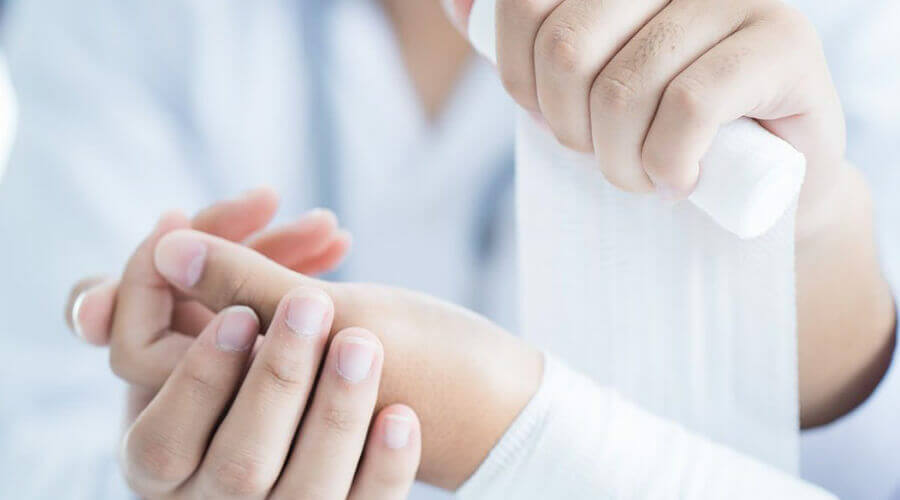
First, let’s assess the scale of the problem.
If the burn is bigger than the palm of your hand, if it’s on your face or around your genitals, you need to see a doctor. Fortunately, minor burns other than these can be treated at home.
Many factors determine the severity of a burn.
These may include the size of the affected body surface, the depth and degree of the burn, the general health of the injured person and their age. Babies, sick people and older people are more at risk.
The combustion can be divided into 4 stages.
In a stage I burn, only the top layer of skin is damaged, swollen, red and painful.
In stage II burns, the deeper layers of the skin are also damaged and blisters appear in the affected area, initially with a transparent, later yellow pus.
In a stage III burn, many more blisters appear. These blisters appear in the deeper layers of the skin. The burnt skin is grey in colour.
In a stage IV burn, the skin and underlying tissue are charred.

But if we are sure that it does not require hospitalisation, we can start treating the wound.
Mild burns can be treated at home. Treat first and second degree burns at home! Treatment of 2nd degree burns is only recommended at home if you have some experience. Otherwise it is a moderately deep burn that usually requires medical attention.
– The wound must be cooled! Hold the burnt surface under cold running water for about 15 minutes. Ice should not be used to cool it, and the water should not be too cold. Cooling is important for several reasons. Firstly, it eases the pain and protects the deeper tissues from further damage. In the past, folk medicine recommended sour cream, but this is now discarded.
– Next, the wound is dressed with a sterile gauze pad or bandage. This will stop the wound from becoming infected. Do not use cotton wool for this purpose, even sterile cotton wool, because it will stick!
– In second degree burns, small blisters appear on the skin surface. Do not touch these!
– The burn is then treated, the primary aim of which is to relieve pain. Aloe Vera gel or calendula ointment can be used for this purpose.
– The last step is to dress the wound. Burns should be dressed very carefully. Use sterile gauze and bandages for this too!
First degree burns usually take 5-8 days to heal, second degree burns 1-2 weeks. In this case, if the burn is purulent and bloody, consult a doctor after you have treated it at home. Treatment of a fissured burn is not a home or home treatment, so leave this to a doctor. For third or fourth degree burns, an ambulance should be called.
Honey can also be great for burning at home. Because of its antibacterial properties, it helps prevent the wound from becoming infected. It also kills bacteria and prevents infection.
Treatment of a blister burn is very important as it is an indication of a second degree burn. In this case, the blister must be removed and proper dressing will be required. This is recommended to be done by a specialist. A cream can also be applied to a blister burn to help soothe the skin and relieve the pain. Examples of such creams are chamomile or aloe vera based creams. Care must be taken, otherwise the blisters may break out. Treating a blister that has ruptured requires medical expertise and should be referred to a doctor. Unfortunately, home treatment can only make matters worse if the injury is of this severity.
Treating sunburns at home is easy. It is very important to cool the burned surface. An ice compress can be great. If a blister or pimple appears, you should not touch or fiddle with it. Aloe vera can also help as it cools and heals the inflammation. Treating scalded skin with aloe vera can also be effective. Alternatively, if it is very blistered and painful, it is definitely recommended to show it to a doctor.

